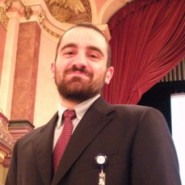
.
After attending a series of presentations and discussions in Heidelberg’s TechNet International (TNI 2011) and NC3A Industry Day, we wish to share our opinion and perspective of these events with the wider community!
.
The first session of the TechNet International 2011 carried the title: “Technological Aspects”
.
The panel, chaired by Mr. David Burton (CTO of NC3A), consisted of highly distinguished speakers, like:
Dr. Marko Erman, VP & CTO, Thales Group (FR)
Mr. Pedro Schmid, Head of Business Development, Nokia Siemens Networks (GE)
Mr. Kees Jan Hermans, Technical Project Lead of Crypto Unit, Fox-IT
Dr. Eng. Antonio Mauro, PhD, Security Solution Architect
Getting into detail, if one thing was made crystal clear, it was that the new form of the organization requires that N.A.T.O plans and delivers I.T services same way an enterprise would; using commercial technology. Therefore, a 25 point implementation plan is now being developed to reform federal information technology management.
The implementation of cloud computing is very important for the deployment on the field, gaining and analyzing information and finally offering administrative and operational support.
Moreover, a question has risen on whether the multinational organization should own the cloud. If so, then it would be considered rather efficient for the form to consolidate servers and data storage, as well as provide virtualization of servers and the control of any desktop computer within the servers. This act would lead to easy access to vital information and important services that may prove decisive. The cloud is only one solution out of a handful of ways to provide deployable C.I.S. such as secure tactical radio communication in multinational operations.
However, technology alone is not efficient. The cloud should be supported by all nations that take part in N.A.T.O. .The organization from its part must lead the way in sharing technology, while managing the avoidance of competition between agencies and industries by promoting cooperation. The communication and I.T infrastructure must be designed and delivered coherently by all country-members. The further involvement of all the allies is crucial for the future of the organization as well as its advancements on different domains .
The first session’s presentations have indicated that certain steps must be taken towards effective multinational collaboration.
- Firstly, modernize infrastructure. All participants must spent capital to achieve the same level of hardware capabilities in order to support the future plans for use and deployment of technology.
- Secondly, migrate to IP networks. Due to the fact that IP networks categorize protocols into different hierarchical abstraction layers, this is considered a much more prefered choice.
- Thirdly, develop deeper partnerships with more countries.
Expansion of collaboration as well as intensification of already existing ones is an issue of major importance.
A large proportion of the plan for the future of the organization will be be based on commercial technologies as mentioned above. N.A.T.O. is planning to adopt, implement and use these technologies exactly because they can deliver coherent communications and IT infrastructure in an efficient and integrated fashion. Also, assisting the rationalization and provision of Information technology and Communications Information Systems will play a significant role. Another aspect of commercial technology is the use of satellites. It is possibly the single biggest challenge for N.A.T.O .over the decade for improved electronic services, communications and information dominance over the battle fronts.
.
“The adoption of commercial technologies will be the bridge to a new future”
.It is already coming your way..Embrace it
.
Michael Sarantidis, DEREE – The American College of Greece
Junior, School of Business Administration, Computer Information Systems
Officer of Public Affairs, AFCEA Student Club


I really loved this post. You explain this topic very well. I really enjoy reading your blog and I will definetly bookmark it! Keep up the interesting posts!
Thought-provoking post. Thanks for sharing it!
Wow I’ve been searching for days for a new blog to read and I think I have finally found one which suites my tastes perfectly keep up the hard work 🙂